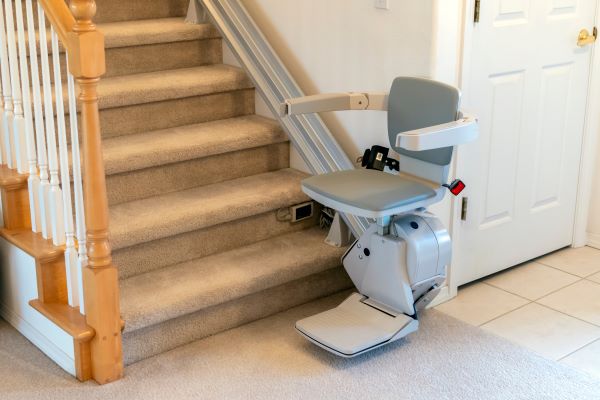As of October 2025, the Social Security Administration (SSA) will have stopped issuing paper checks…

The Benefits of Home Improvement for Older Adults
As the population ages, most Americans want to remain living in their homes and in their communities as long as possible. As a result, many homeowners are taking steps to modify their homes so they will be able to safely and comfortably remain in their homes for as long as possible. This is called “aging in place.”
With the average annual cost of assisted living at $43,200 and nursing home care at $80,300 you will likely save money over the long run by investing in aging-in-place home improvements. Also, if you have long-term care insurance, it may help cover some of the costs.
Here are some of the most popular home improvements to consider if aging in place is important for you or a parent. You’ll notice that many are designed to help prevent the risk of falls, which dramatically increases with age.
In the bathroom:
- Install a shower with a zero threshold entry (no curb) to minimize tripping and to make it accessible for a wheelchair.
- Add a shower chair (for those not in a wheelchair) and a hand-held showerhead.
- A comfort-height toilet (17-19 inches off the ground) will make getting on and off easier. (You can also buy a toilet seat extender, which sits on top of the existing toilet seat.)
- Install grab bars near the toilet and in the shower.
In the kitchen:
- Create counters at multiple heights to have the option to sit or stand when preparing meals.
- Install an under-the-counter microwave instead of one overhead.
- Add pull-out shelves in cabinets.
Throughout the home:
- Install nonslip floors, such as textured stone or linoleum.
- Increase lighting.
- Install remote controls for lights and window coverings.
- Lower electrical switches and raise outlets.
- Change doorknobs to lever-style handles and cabinet knobs to handles.
- Move the master bedroom to the first floor and install a bathroom if necessary.
- Add a ramp to the entrance and widen hallways/doorways to accommodate a wheelchair.
Many of these options, and more, are thoughtfully being included in new construction for those who want to purchase aging-in-place-ready homes. Custom homes being built for some of our disabled veterans are filled with innovative ideas. You can also consult a design or home improvement specialist who has experience with aging-in-place features.
We hope you found this article helpful. If you have questions or would like to discuss a personal legal matter, don’t hesitate to reach out. Please contact us at (321) 729-0087.



